
Rate of activity in the primary sector (e.g. agriculture, mining, forestry, grazing, hunting and gathering, fishing, and quarrying). Source: http://atlasa.net/en/society/provinces
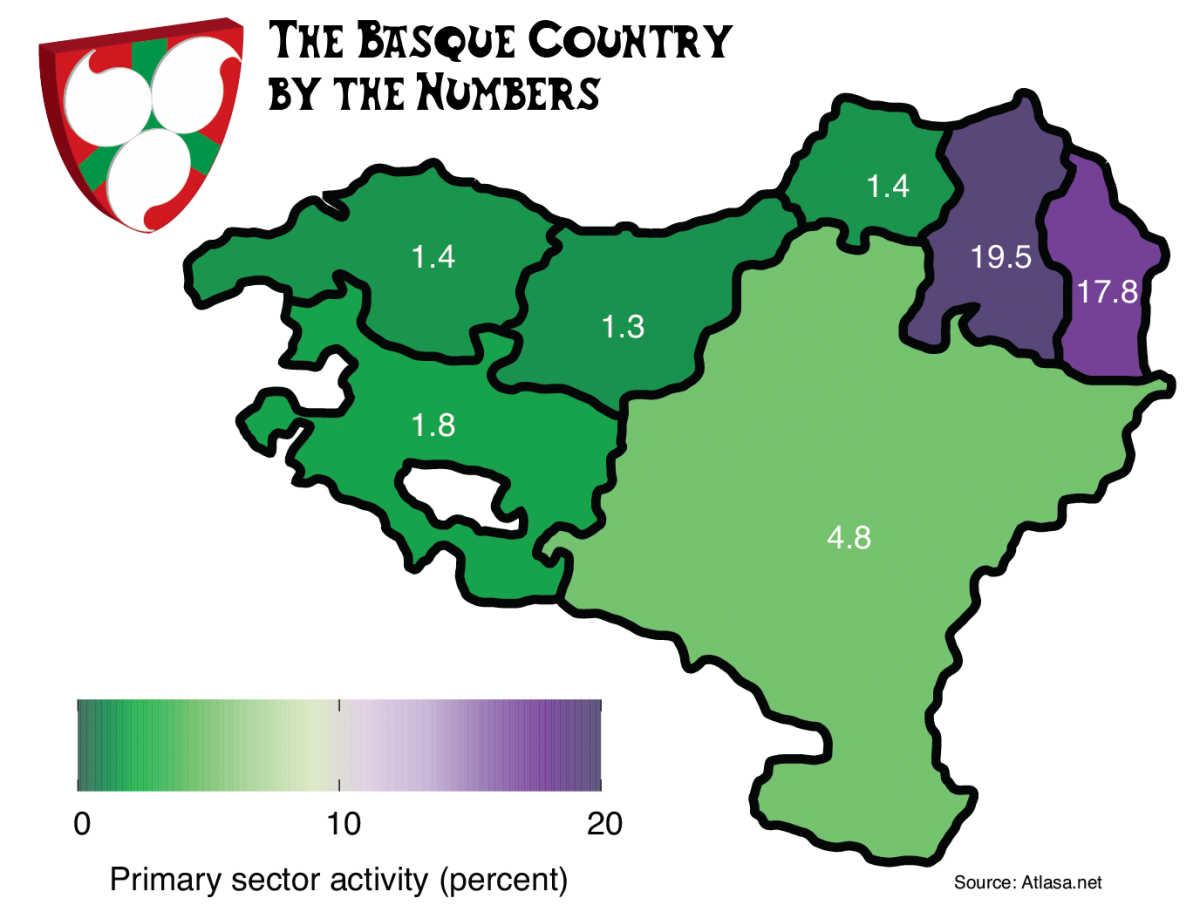

Rate of activity in the primary sector (e.g. agriculture, mining, forestry, grazing, hunting and gathering, fishing, and quarrying). Source: http://atlasa.net/en/society/provinces


“Wow,” said Kepa. “That’s amazing!”
Maite glared at him. “You believe all of this? None of this is even possible. Magical stones thrown through time? An evil French judge trying to collect them?” She turned to Marina. “Why would he come here, to the Basque Country, in the first place?”
Marina gave a wan smile. “I know how fantastic it seems. If I wasn’t living it, I wouldn’t believe it myself. From what I can tell, the world used to be filled with magic, but the influence of that magic waned with time as people turned to other beliefs. In Europe, much of that happened with the spread of Christianity. As the Church spread, the belief in and, more importantly, practice of magic shrank until there was nothing left but one little alcove…”
Buber’s Basque Story is a weekly serial. While it is a work of fiction, it has elements from both my own experiences and stories I’ve heard from various people. The characters, while in some cases inspired by real people, aren’t directly modeled on anyone in particular. I expect there will be inconsistencies and factual errors. I don’t know where it is going, and I’ll probably forget where it’s been. Why am I doing this? To give me an excuse and a deadline for some creative writing and because I thought people might enjoy it. Gozatu!
“The Basque Country!” exclaimed Kepa. He turned to Maite. “Don’t you see? The Basque Country was one of the last parts of Europe to really embrace Christianity. It’s because they still held on to the older beliefs.”
Marina nodded. “That’s right. The Basques held on to magic longer than other Europeans. De Lancre realized this, and saw the potential for using that magic for more than healing one another, for changing the course of storms. He thought that if he could consolidate it, capture it for himself, that power would make him a god amongst men. There is no limit to his ambition. He truly believes he could rule the entire planet. All starting with that seed in the Basque Country.”
“If you are the Marina who died at the stake all those centuries ago, how are you here now then?” asked Maite, her disbelief clear in her words.
“I honestly don’t know,” replied Marina. “When I ‘died,’ somehow my spirit survived. I’m able to inhabit the bodies of blood relatives, of ancestors and descendants of my blood line. I didn’t have any children of my own, but my mom’s sister did, and I’m able to jump to any woman descended from her. So, I can follow de Lancre as he searches for the zatiak — the pieces of magic — but only if I have an iloba, a niece, or amuma in the same time and place. I’ve been lucky, so far, that most of the time there has been someone nearby, but that’s not always the case.”
“So,” interrupted Maite, “you are a mamua, a ghost, that jumps through time and possesses the bodies of your relatives?”
Marina shrugged. “Yes, I guess.”
“And Ainhoa is in there? Does she know what is going on?”
“Not really. She has a vague recollection that mostly manifests itself in her dreams. She won’t really recall being out here or talking to you. But, she’ll have dreams about me and about de Lancre…”
“That explains her song!” exclaimed Kepa. “That song about witches. It was about you!”
Marina smiled.

The Basques have always been known for their adventurous spirit. Their search for fishing grounds took them to Iceland and beyond, reaching the coast of what would become Canada, where they established whale processing sites and developed a pidgin with the local Native Americans (and the Icelanders too). However, they also played a big role in the Castilian conquest of the Americas. Their expertise as seamen made them valuable to both France and Castile. Much of the current shape of the Americas is due to the actions of the many Basques who were part of the conquest.

Primary source: Álvarez Gila, Óscar. Vascos en la conquista y colonización de América. Enciclopedia Auñamendi. Available at: http://aunamendi.eusko-ikaskuntza.eus/es/vascos-en-la-conquista-y-colonizacion-de-america/ar-28435/
Note: The article in the Enciclopedia Auñamendi states “Juan de Ibarra” was the founder of the city of Durango, Mexico, but everything else I can find says it was “Francisco de Ibarra.” Also, some say he was from Eibar, but other sources say he named Durango after his home town.


“Anyways,” continued Marina, “I was alone. I couldn’t go back to my home, since the other villagers were always watching, afraid that some new evil would rise from it. At one point, the fear became so great that they burned it down. I made a new home in the woods, but those that needed help, needed a healer, soon found me. I tried to be as discreet as possible, not wanting to draw any attention to myself, but my only skills were those my ama and aita had taught me and I had no other way of supporting myself. Not to boast, but I was very talented, much more so than my own ama, and my fame, despite my best efforts, grew.” Marina looked down. “And, I admit, my own ego got the best of me. I reveled in the attention, in the powerful abilities I had cultivated, and I forgot the lessons of my parents.
“It wasn’t long before my name was on the lips of the local authorities. They brought in Judge de Lancre to settle some dispute about the Lord of Urtubi being a witch, a sorgin.”
Buber’s Basque Story is a weekly serial. While it is a work of fiction, it has elements from both my own experiences and stories I’ve heard from various people. The characters, while in some cases inspired by real people, aren’t directly modeled on anyone in particular. I expect there will be inconsistencies and factual errors. I don’t know where it is going, and I’ll probably forget where it’s been. Why am I doing this? To give me an excuse and a deadline for some creative writing and because I thought people might enjoy it. Gozatu!
“De Lancre?” interrupted Kepa. “As in Pierre de Lancre?”
“The very same,” confirmed Marina. Kepa looked at Maite, his eyes wide, as she simply shook her head at him.
“As the Judge began investigating,” continued Marina, “he saw sorginak and sorcerers — agents of the devil — everywhere. It wasn’t long before I was hauled before him, some poor client having given up my location when he had been confronted, and likely tortured, by the Judge. I was held in a dark cell, interrogated repeatedly, tortured to reveal my secret association with the devil. I was forced to watch as others, ones I knew were no sorgin and had no special abilities, were burned at the stake. Even so, I never said a word to that evil man. Eventually, exasperated, he condemned my body to death and my soul to damnation.
“I was dragged to the burning place, where they had burned the others. I was helpless as they pulled me up the pile of wood and tied me to the stake. I watched with horror as the flames caught and rose around me. But, in the background, I could see de Lancre, his eyes on me and his smile penetrating the smoke.
“My anger grew. You see, the Judge didn’t care about who was a sorgin or not. He was after something else. He wanted our power, our magics, for himself. His destruction of untold numbers of lives was all about his own quest for power. He had tortured me, often smiling in my face as they turned the screws that stretched my arms from their sockets. While he told his superiors that he found thousands of witches that needed purging to keep the Church pure, he was really trying to learn our secrets, learn where our power came from.
“As I hung by the stake, the flames rising around me, licking at my skin, I lashed out. New-found power grew within me. I could feel it flowing into my body from literally everything around me. All of the magic of the country, all of the power that de Lancre was searching for, coursed through me. I could feel it almost crystalize inside of me. In my last act before the flames consumed me, my body literally exploded, shattering that magic into little crystallites, fragments of our magic — zatiak — sending them across space and time so that the Judge could never find the magic, never claim it as his own. I threw them to wherever and whenever we Basques have been, with the hopes that he could never find them. The last thing I saw was de Lancre’s face filled with horror and rage as he realized that everything he had searched for, had killed for, was suddenly right in front of him and then, just as suddenly, was gone.
“Unfortunately, that didn’t stop him as I hoped, it only delayed him. That’s why he was here. He found a way to find the zatiak I had thrown across the millennia. I’m doing my best to stop him, but he is often just one step ahead.”
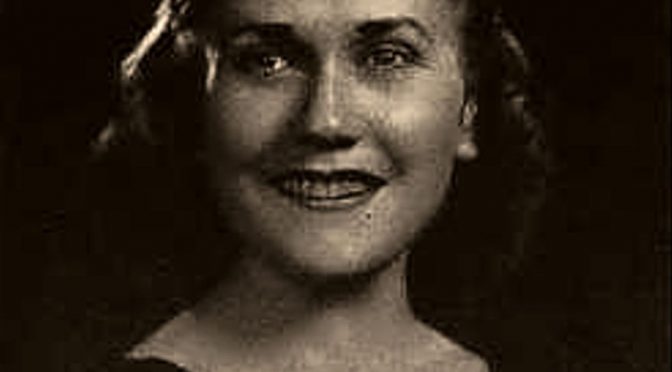
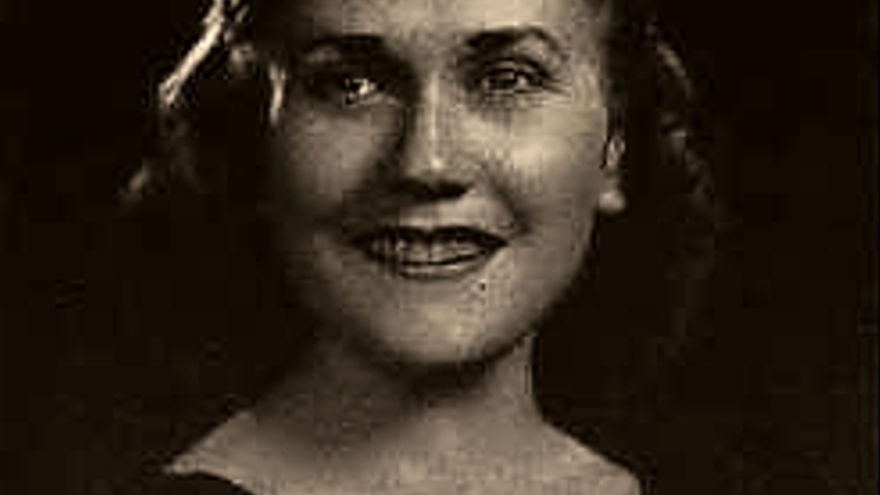
This article originally appeared in Spanish at El Diario. You can find all of the English versions of the Fighting Basques series here.
The struggle of women for equal participation in American society – from the right to vote, achieved in 1920, and women advancing in equality with men in terms rights and responsibilities derived from their full citizenship, to social and labor rights (access to the labor market or equal pay) – had a certain push (certainly short-lived) during the Second World War (WWII). It is here, and beyond their roles in office, hospitality or cleaning jobs, when a large number of women entered the labor market for the first time or, also for the first time, found jobs reserved until then exclusively for men, who were mobilized by the war efforts. The war economy desperately needed the labor of women and they proudly participated, just like the fictional character of Rosie the Riveter, in all kinds of jobs – whether as drivers of ambulances, buses, trains or trams, mechanics or engineers and/or in factories dedicated to war machinery, building ships, airplanes or manufacturing weapons or ammunition, among other materials. Often, however, they worked conditions that were deficient (dangerous, hard, and unhealthy) and unequal compared to their male partners (for example, with much lower wages) and in a context in which some men treated them with harassment and resisted the presence of their new partners.
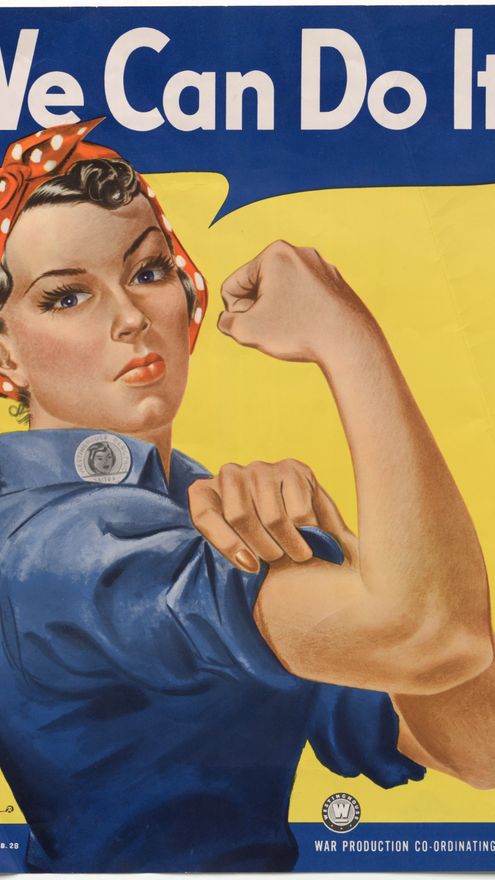
The Basque-American community, like the rest of American society, took an active part in the war effort. As we have seen, women were a key element in the war economy, both in its civilian and military dimensions. Among the first we have the Californian Benita Serrano Cartago, born in 1923 on a sheep ranch in the town of Huron, owned by her parents, who had emigrated from Nafarroa. At the age of 19 she moved to Stockton, California, where she worked until the end of the war as a welder, living, as she said, “some of the best moments of her life” (1). Benita received the ‘NAVY E’ Award for her excellent work at the shipyard. She passed away at the age of 95 in 2019 in Fresno, California. Similarly, during the war, Felisa Caballero Errotaberea – born in Chino (California) in 1920 to Navarrese parents – worked both as an assistant at a gas station and rivetinag parts for the aircraft construction company Douglas Aircraft in her hometown. She passed away at the age of 96 in 2016 in Spokane, Washington.
“Echoes of two wars, 1936-1945” aims to disseminate the stories of those Basques and Navarrese who participated in two of the warfare events that defined the future of much of the 20th century. With this blog, the intention of the Sancho de Beurko Association is to rescue from anonymity the thousands of people who constitute the backbone of the historical memory of the Basque and Navarre communities, on both sides of the Pyrenees, and their diasporas of emigrants and descendants, with a primary emphasis on the United States, during the period from 1936 to 1945.
THE AUTHORS
Guillermo Tabernilla is a researcher and founder of the Sancho de Beurko Association, a non-profit organization that studies the history of the Basques and Navarrese from both sides of the Pyrenees in the Spanish Civil War and in World War II. He is currently their secretary and community manager. He is also editor of the digital magazine Saibigain. Between 2008 and 2016 he directed the catalog of the “Iron Belt” for the Heritage Directorate of the Basque Government and is, together with Pedro J. Oiarzabal, principal investigator of the Fighting Basques Project, a memory project on the Basques and Navarrese in the Second World War in collaboration with the federation of Basque Organizations of North America.
Pedro J. Oiarzabal is a Doctor in Political Science-Basque Studies, granted by the University of Nevada, Reno (USA). For two decades, his work has focused on research and consulting on public policies (citizenship abroad and return), diasporas and new technologies, and social and historical memory (oral history, migration and exile), with special emphasis on the Basque case. He is the author of more than twenty publications. He has authored the blog “Basque Identity 2.0” by EITB and “Diaspora Bizia” by EuskalKultura.eus. On Twitter @Oiarzabal.
Josu M. Aguirregabiria is a researcher and founder of the Sancho de Beurko Association and is currently its president. A specialist in the Civil War in Álava, he is the author of several publications related to this topic, among which “La batalla de Villarreal de Álava” (2015) y “Seis días de guerra en el frente de Álava. Comienza la ofensiva de Mola” (2018) stand out.
Other women in the Basque community chose to join the armed forces, the undisputed prototype of masculinity. About 350,000 American women served voluntarily, both at home and abroad, in the (auxiliary) military bodies created ad hoc at the beginning of the conflict and which were assigned to the different military branches. The objective was to free the soldiers from all non-combatant jobs (from administrative jobs to radio operators or airplane pilots) so they could be transferred to the front. These new military corps joined the traditional Navy and Army nursing corps, made up of a large number of women. However, this incorporation followed the same patterns of discrimination and inequality seen in civil society at the time, in accordance with the notion that the most appropriate place for women was the home. The female soldiers had to overcome the resistance and disdain of family, friends and society in general and the view that they were a threat to the status of men as soldiers.
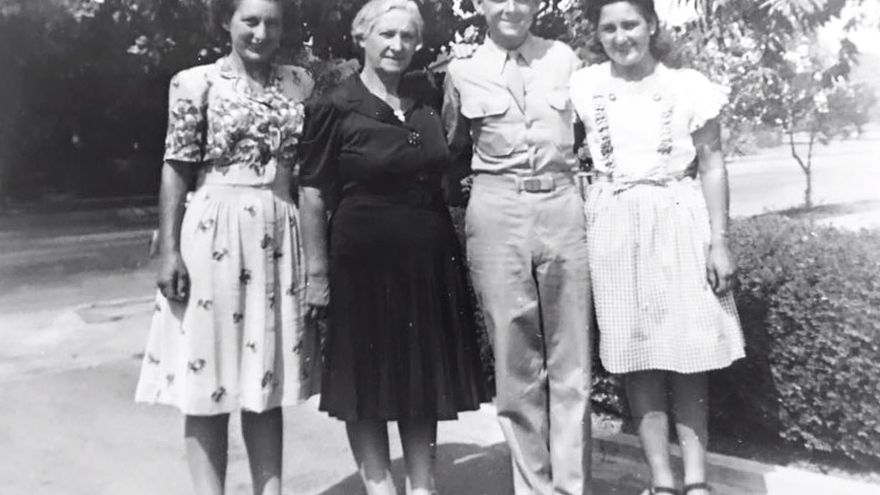
For example, within the Basque community of the State of Idaho, predominantly of Biscayan origin, there was an important group of women who served in the different military branches. In the women’s reserve corps of the Navy, officially called Women Accepted for Volunteer Emergency Service (WAVES), we find Lidia Magdalena Uranga Sabala, born in Boise, Idaho, in 1918 to Biscayan parents. She studied at Boise Junior College, where she obtained a teaching certificate. Some 84,000 women enlisted in the WAVES during the war, receiving from the beginning of its creation in July 1942 the same status as male reservists. Lidia enlisted in 1943 and was sent to train at Hunter College in New York and from there to the Naval Air Station in Atlanta, Georgia, where she graduated as an instructor for the ‘Link’ aerial simulator. Finally, Lidia was assigned to the Naval Air Station of Bunker Hill, in Indiana, where she worked as a Specialist (Teacher) Second Class, forming part of Patrol Squadron 19. She taught others to operate flight instruments as an instructor of the ‘Link’ aircraft control simulator, a job that consisted of giving advice to an officer who was conducting checks on the simulator. Lidia graduated in 1945 and passed away in her hometown at the age of 80. Women became a permanent part of the army in 1948.
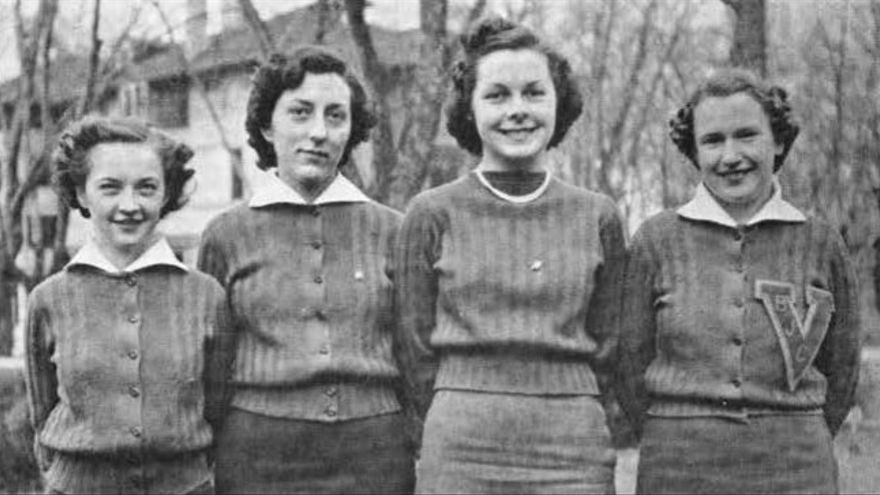
In the Women’s Army Corps (WAC), we have identified Beatrice Mendiola Ostolaza and Mary Osa Echevarria, both born to Biscayan parents in 1921, in Ontario, Oregon and Twin Falls, Idaho, respectively. They were two of the roughly 150,000 women who enlisted in the WAC, established in May 1942, and which provided the same military status and benefits as men – but with less pay until September 1943 when they finally received equal pay. This was a great advance considering that, in civilian industry, women received a much lower salary than men for doing the same job. Beatrice enlisted in 1943 in Salt Lake City, Utah, and was one of the first Basque women in Boise to do so, while Mary did so in San Francisco, California, in 1944. After receiving an intensive training course at Camp Ruston in Louisiana, Beatrice was sent to Camp Breckinridge in Kentucky and finally to Columbus, Ohio, where she graduated with the rank of sergeant. Mary passed away in 1991 in Santa Rosa, California, at the age of 69. Beatrice died at the age of 94 in 2016 in Cleveland, Ohio. In 1978, the Army abolished the WAC and fully integrated women into its ranks.
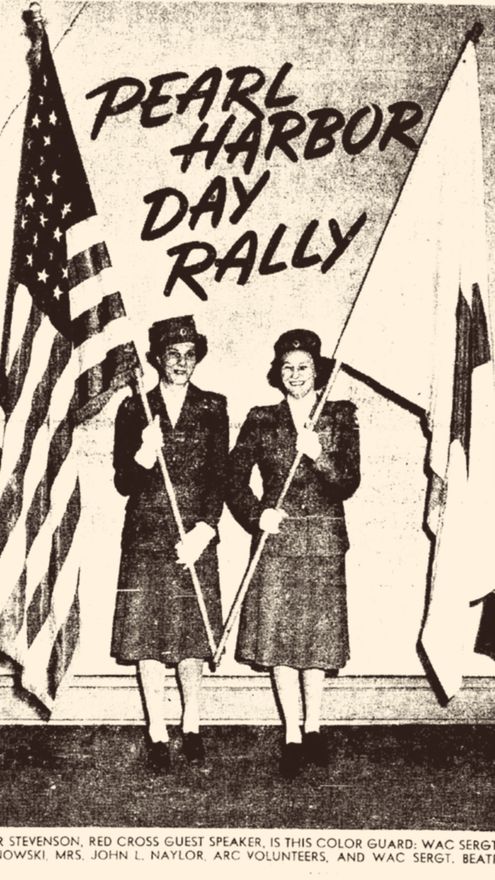
In the Army Nurse Corps (ANC), created in 1901 – originally without the military rank, pay or benefits of her fellow soldiers until June 1944 – we have Angelina Landa Portillo, born in 1914 in Merced, California, of a Navarrese father and Californian mother, and María Benita Rementeria Llona, born in 1917, in Hagerman, Idaho, of Biscayan parents. The ANC had more than 57,000 women in its ranks during WWII. Angelina, a nurse since 1938 at Fresno General Hospital, joined the ANC in 1941. According to her personal military file, she was first sent to Fort Ord, Marina, California, (Hospital Service Command Unit), staying there until December 26, 1942. From early January 1943 to February 1944, she worked at the Pendleton Air Force Base hospital in Oregon, primarily as a surgical nurse. Due to her excellent performance, Angelina was sent to the 81st Army General Hospital, based in Rhydlafar, Cardiff, Wales in mid-1944, where she treated the casualties of the Battle of Normandy. She was discharged with honors in January 1945 with the rank of Lieutenant. She passed away in 1981 in San Francisco at the age of 67.

María Benita Rementeria Llona graduated as a nurse from St. Alphonsus Hospital in Boise in 1938. From the early 1940s until probably 1943, she worked as a nurse at the Marine Hospital in Seattle, Washington, serving war veterans, merchant sailors and the Coast Guard, among others. In 1943, Maria enlisted in the Army Nurse Corps. In March 1944 she was sent to Australia, serving as a lieutenant in the New Guinea campaign until the end of the war. Both the tropical climate and the diseases that accompany it made the work of María and her companions even more difficult. Malaria or dengue produced more casualties than enemy fire. The Idaho Sunday Statesman of August 13, 1944 reported how Maria “was living in primitive conditions to save the lives of the wounded.” In a letter sent to her parents, Benito and Luciana, María welcomed the advance of the war: “The news of the invasion was received here with great joy. And now our dazzling advances in the theater [of operations in the Pacific] keep our hopes high. But when I hear from patients how cautious and cunning the Japanese are, there is still a hard and constant struggle to be made.” At the end of WWII, María, with the rank of captain, continued her military medical career in the Commissioned Corps of the United States Public Health Service – the uniformed federal service of the United States Public Health Service, made up only of non-combatant commissioned officers. Maria retired with the rank of Colonel in the Army. As of today, she is the woman of Basque origin with the highest military rank that we have identified in our investigation into the Basque presence in the US armed forces of WWII. She passed away in Boise in 2000 at the age of 83. Her brother David had lost his life in England in 1944 when his “Flying Fortress” crashed while taking off for a combat mission.
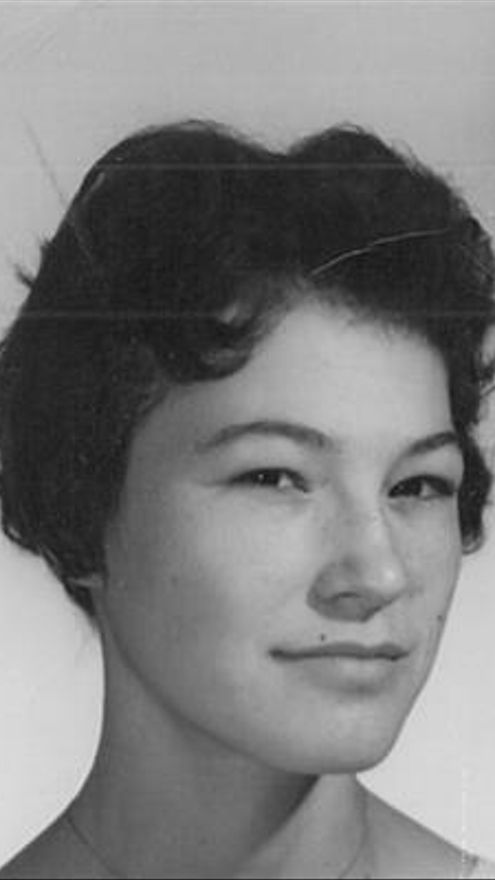
Symbolically, the ‘Rosies’ of WWII and those incorporated into the different branches of the armed forces demonstrated to the whole of American society as well as to the political and socioeconomic elites of the country that they were as capable as men to carry out every type of work outside the home, both in times of war and peace. The ‘Rosie the Riveter’ generation briefly caused society to rethink their preconceived ideas about gender, stereotypes and roles assigned to men and women by society and tradition. Still, other factors such as skin color, ethnicity, class, or religion continued to deeply divide American society and the labor movement itself. Sadly, the 1950s soon obliterated the crucial participation of women in the labor market of just a few years earlier, as they were once again relegated to a purely domestic role away from the “unconventional” jobs of the war. Seventy-five years later the struggle continues.
Through this article, the Sancho de Beurko Association wants to honor and recognize the contributions of women in the success of the Allied victory in World War II. This article is in itself a first step in the visibility of American women of Basque origin during this crucial period in our contemporary history.
(1) Obituary of Benita Serrano, published in the Fresno Bee on January 13, 2019.
If you want to collaborate with “Echoes of Two Wars,” send us an original article on any aspect of the WWII or the Spanish Civil War and the Basque or Navarre participation to the following email: sanchobeurko@gmail.com
Articles selected for publication will receive a signed copy of “Basque Combatants in World War II”.
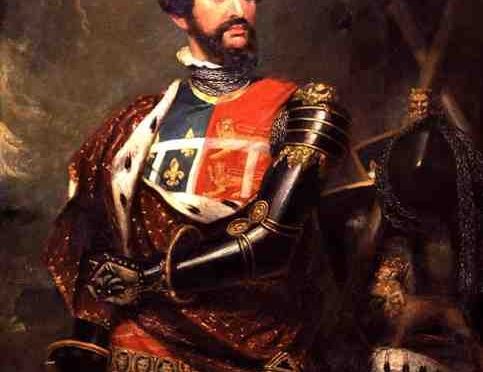
Looking back at the history of Europe, it is amazing how what we view today as solid political borders and national identities often grew out of random happenstance. If Joan of England had made it to Castile to wed Peter the Cruel, instead of succumbing to the Black Death at the age of fourteen, how would the history of the Iberian Peninsula have changed? So it is with the history of the Basque Country, where political intrigue and treachery shifted the fortunes of the country and the people.

Primary source: El príncipe de Gales, señor de Bizkaia, in Deia. Thanks to Joseba Desubijana for recommending this article to me.
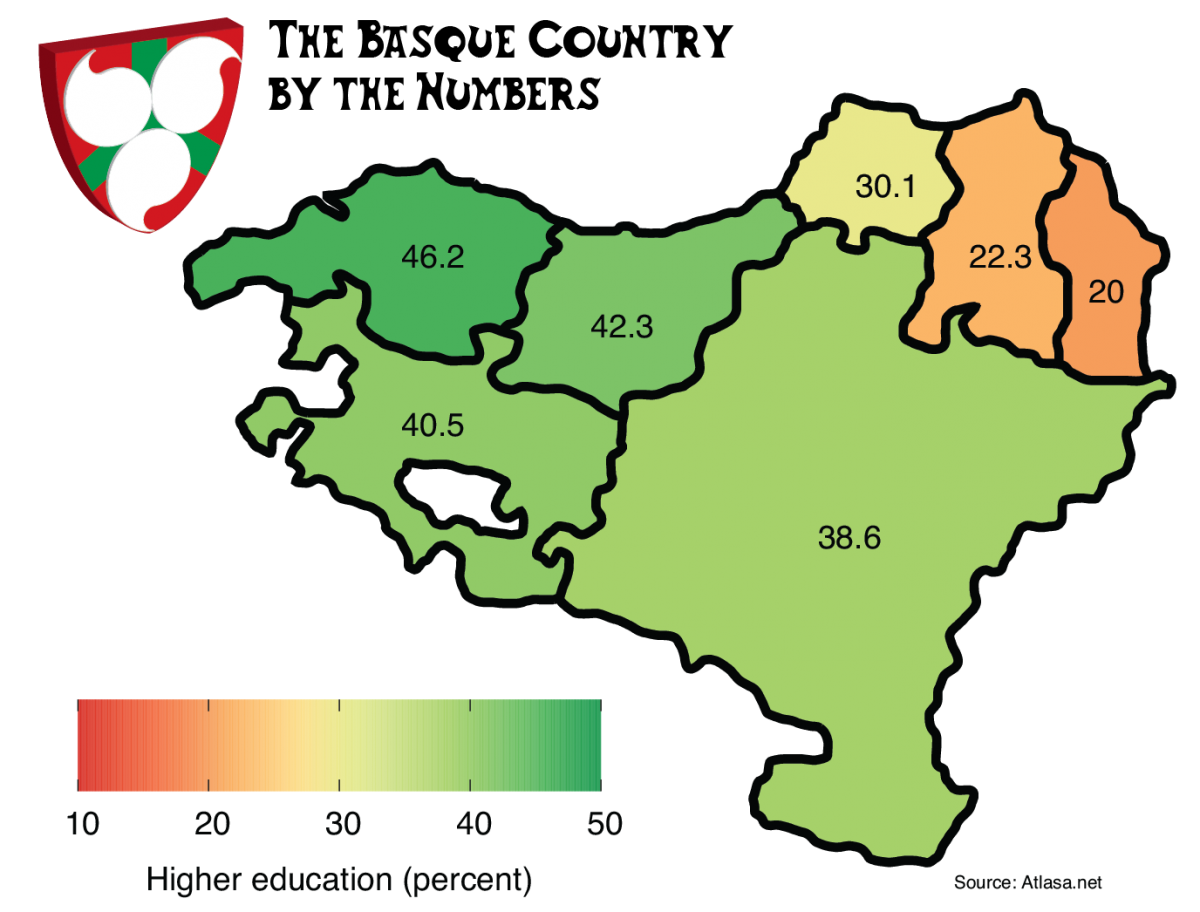

Rate of higher education in 2010. Source: http://atlasa.net/en/society/provinces


“Like I said,” began Marina, “I was born in 1583, in a small village in Lapurdi called Sara — the French call it Sare. It’s just across the border from…”
“Zugarramurdi,” interrupted Kepa. “I’ve been there. It’s a cool little town.”
Maite just shook her head at him.
“Yes,” continued Marina. “My parents lived in a small baserri just a few kilometers from the center of the village. My ama, Clara, was known for her skills with herbs. People from the neighboring villages would come for poultices to cure wounds, for love potions, and, most of the time, for advice. She became quite well known in the area as a sendatzaile, a healer. My aita, Vicente, spent his time tending the gardens and gathering the ingredients that my ama needed for her work. I was an only child, very rare at that time, and I helped them as I could, slowly learning my ama’s craft, the secrets of which herbs and ingredients were needed to heal a cold versus the ones needed to mend a broken heart. My ama taught me the recipes while my aita showed me where to find the most prized mushrooms and how to raise the toads used in the most powerful potions. I soon became their apprentice. We had more work than we could handle, even with my help. There was always someone knocking on our door. We weren’t rich by any material measure, but we were comfortable and, most importantly, we were happy.
Buber’s Basque Story is a weekly serial. While it is a work of fiction, it has elements from both my own experiences and stories I’ve heard from various people. The characters, while in some cases inspired by real people, aren’t directly modeled on anyone in particular. I expect there will be inconsistencies and factual errors. I don’t know where it is going, and I’ll probably forget where it’s been. Why am I doing this? To give me an excuse and a deadline for some creative writing and because I thought people might enjoy it. Gozatu!
“One day, my ama sold a love potion to the wrong client. A young man in the neighboring village of Azkaine was infatuated with the girl next door and bought a love potion from my mother so that the young woman would return his affections. One evening, he stopped by his neighbor’s house on the pretence of delivering some extra bread that his ama had made. The etxekoandre, the young woman’s ama, invited him in for a glass of wine, as she also hoped that the two would find a spark. The young man, when the two women were busy in the kitchen, poured the potion into one of the wine glasses. Unfortunately, he chose the wrong one, and he watched in horror as the ama picked up the tainted glass and drank down the potion. As her eyes gazed upon the young man, her heart skipped a beat and immediately belonged to him. The young man was petrified as the ama sat next to him, her hand on his chest, her voice whispering in his ear. The daughter, who had also been secretly in love with the young man, fled the house in despair. The aita of the family returned home to find his wife in the protesting arms of the young man. As he confronted the two, his wife declared that she had stopped loving him and was now in love with the young man. Of course, the young man wanted no part of the woman’s advances and rejected her in the strongest possible terms. Shattered, the woman also fled the house. The aita tried to follow, but lost his wife in the woods. It was a few days later when the bodies of both women were found, the young woman at the bottom of a ravine and the ama, seemingly drowned by her own hand, floating in the river.
“The aita, besotted with grief, nearly killed the young man in his rage. As blow after blow fell on the young man, he revealed that he had slipped the aita’s wife a potion, claiming it was only meant to cause the woman to fall asleep so he could talk in private with the daughter, claiming he must have been given a love potion by mistake. He of course blamed my parents for the mistake. We soon found the aita, in the company of several of his neighbors, at our door, literal pitchforks in hand. I’ll spare you the details, but I escaped to a cave in the woods my aita had shown me as he held back the mob for a few moments.”
Marina’s voice cracked as she continued. “Unfortunately, my ama and aita were not so lucky.”


Esther Ciganda doesn’t wait. She doesn’t ask what if. Instead, she makes things happen. Whether that is being Team Leader for Team USA Basque Pelota or fulfilling life-long dreams of moving to the Basque Country and learning Euskara, Esther makes her dreams come true. And, now, she wants to help others do the same by making learning Euskara that much easier via her new online Euskara school. I sat down virtually with Esther to talk to her about fulfilling dreams.
Buber’s Basque Page: Your parents both immigrated to the United States from the Basque Country. How did growing up in such a strong Basque home impact you as a child?
Esther Ciganda: As a child, I learned that I had to balance “two lives.” I had to be & act a certain way at home. We used Spanish as the home language since both my parents know Spanish. (Dad speaks Basque and mom doesn’t). I learned different cultural mannerisms.
For example, how you eat with both hands on the table (big no-no to have one hand under the table).
Even the way we learned math at school was different from how my parents learned so I’d hear them say I’m doing it wrong but the teacher would tell me a different way. (What mental confusion that I didn’t learn about until I was teaching Biology & Chemistry and I went to a summer training course where they talked to us about being aware that our students from different backgrounds may do math differently…WHAT? AH HA, what an AH HA moment that was to realize that’s what had happened to us at home.)
Esther was born in Washington State to immigrant parents from Navarra, Spain, where she grew up learning Spanish at home and English at school. She was driven to learn Basque because first it’d been forbidden to learn by her mom and because her dad along with all his family spoke Basque. Her biggest regret is not taking French in HS when her dad told her to. She thought with so many science classes, she’d rather go after the easy grade in Spanish. Little did she know that 20+ years later she’d be living in France and learning French on her own.
For 16 years, Esther was a high school teacher in the USA where she taught Biology, Chemistry, Health, Physical Science, Spanish, ASB Leadership, and Link Crew. She also coached Science Olympiad, soccer, and track & field. In 2013, she was given the World Language Teacher of the Year in the state of Idaho. An amazing honor she says continues to push her to be the best teacher for her students! Since 2014, she’s been teaching English in Spain. This brought on a change of not only a new subject, English, but also teaching elementary students through adults. After 22 years of classroom teaching, she decided to take on a new challenge in 2020 and take her skills to the online scene. The adventure has just started for Esther and she’s excited to see where it goes. She’s also one of the leaders of the United States Federation of Pelota. She’s been fortunate to not only play in several World Cup tournaments, but also serve as the Team Leader for Pelota Vasca in two Pan American Games.
When not working hard to develop lessons, you can find Esther taking breaks to go Basque in the sun, to work-out or play sports, to read books, to go on hikes, and Face-timing her two nieces. Basically, she hardly ever stops to breathe except to meditate and practice gratitude.
What was also different from others was that we butchered lambs at home, utilized everything from the lamb (none of my “American” friends understood.) Also the staple garden vegetable…garlic, leeks, peppers every year they planted rows and rows.

Getting the opportunity to travel to the Basque Country so many times helped solidify who my family was. It wasn’t just living the immigrant perspective away from the “Old County,” it was getting to go back and interact and see how I could easily relate to my whole family in the Basque Country. We may have been “the Americans,” but we were also raised as being from there as well.
BBP: What struck you the most during those visits to the Basque Country? What made it feel like home?
Esther Ciganda: First, for me, how much family we had there to visit. As a kid, I realized that in the States we didn’t have anyone from my dad’s side whereas my mom had several uncles that had come over as sheepherders and had stayed. So when we’d go, it was nice to have cousins to connect with, and spend time with aunts, uncles and my amatxi (my grandma on my dad’s side, the other 3 passed away when I was too young to remember). I made lots of friends and it was easy to connect with them since life experiences were similar in upbringing.
I’m grateful that my parents did teach us Spanish at least. Even though some cousins had to switch from Basque to Spanish, the majority were brought up with Spanish so we had no problem with language. Having the language was the key to maintaining connections with everyone and feeling at home.
The only odd thing was that even though we were ALWAYS welcome I did feel a disconnect since we weren’t around every year. They made us feel very special! But they also emphasized the Americans are here, but I was content with being introduced as Esther, our cousin, niece, etc., not being introduced as Esther the American, and then our cousin, friend, etc. Just something that stood out to me.
BBP: Has how you keep in touch with family different now from when you were younger? I mean, with new technologies like cell phones and the internet, how has that changed your relationship with your family, either in the Basque Country or, now that you live there, with your family back in the US?
Esther Ciganda: I remember, growing up, my mom and her sisters would write letters to each other. Basically they got news once a month. My dad would phone his mom and his siblings for important dates.
Technology… it’s what has helped solidify our relationship with our family. First, it started with Facebook. The cousins got on that and we connected with each other. Then with everyone having cell phones it became the use of WhatsApp. We have WhatsApp groups, one for each side of the family. It’s a great way to keep in touch with the latest news, dates about things, pictures, etc. Back when we were younger, it seemed we were the only ones who took pictures on our trips there. Now, everyone has cell phones and shares pictures. I also showed my uncles how they could do video calls to talk to my dad. I love it when they do WhatsApp video calls. My dad will also say, send this song to tío Macario, his brother, anytime he hears an oldie but goodie country song.
My presence there also helps to make sure that, in this fast-paced world that we all live in, we keep up our relationships.
My uncle & aunt came with me to the US for Christmas a few years ago. If they had to do it alone, I’m sure it would’ve never happened.
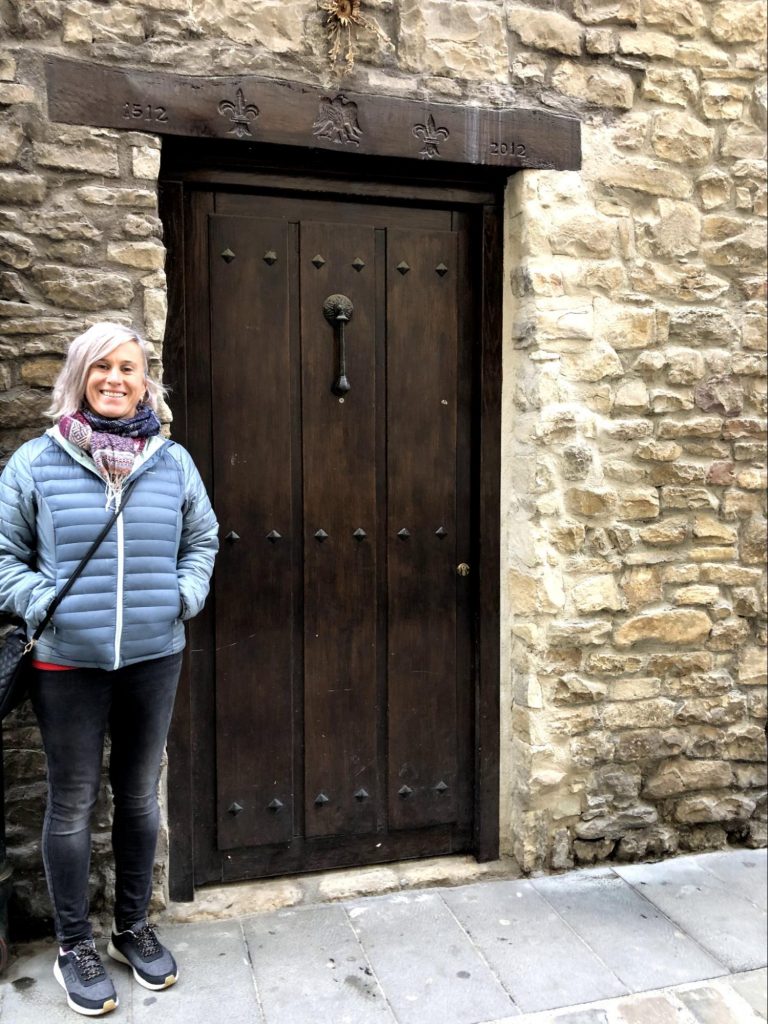
My dad & mom also went to the Basque region two years ago to celebrate San Martin in Auza, Navarra. It’s the festival in his town that I go to every year. I love it there (it’s small) and I eat lunch with my uncle and all of my dad’s old friends. With me going, they all kept asking him to go. So since the corn harvest finished literally a week before the festival, they called me and said book them tickets.
This past Christmas (2019), my brother & his family and my parents went to the Basque region. We celebrated Christmas with my mom’s side and New Year’s Eve with my dad’s. Amazing memories!
BBP: You’ve reversed the direction and have yourself moved to the Basque Country. What motivated your move? What has been the hardest part of adapting to a new home? What has been the biggest surprise?
Esther Ciganda: First, I was driven to learn Basque since I was a little girl. I had heard my dad speak it on the phone to his mother. We’d also go to Basque festivals and he would speak to different Basque guys in Basque. I didn’t like being left out of the conversation. Then when we’d go visit my amatxi, my dad’s mom, she had mentioned several times to me, “it’s a shame that your dad didn’t teach you Basque.”
It was engraved in my head, I wanted to learn Basque. I tried on my own using resources I’d come across on your blog. But learning on my own at home and being a 1st year teacher working on my master’s was difficult. Then in 2007 I moved to Boise (not Euskal Herria but 2nd best choice). I started playing Basque Pelota and in 2010 got to travel to Pau, France for the world championships as a sub. I knew then… my two childhood dreams had been neglected… to move to the Basque Country and to learn Basque. Immediately upon returning to Boise, I went to The Basque Museum and started taking Basque classes. I also made plans to go spend my summer in Lazkao, at Maizpide, and do an intensive summer program of 2 months. I did that for several summers from 2011 to 2014, a total of only 6 months across those summers.
While in Pau in 2010 and afterwards in Durango, Bizkaia for another tournament, I made a plan… I would move when I turned 40 (and if I had nothing holding me back like a relationship or kids). So 2014 came and I had to make a big move… ask my school for a year off and tell my parents!
The hardest part… tell my parents, and the 2nd tell my school (my principal had always feared that I would leave Capital).
That summer before moving was busy… spent the summer studying in Lazkao. Looked for places to live… I wanted a coastal place since I’ve been on a farm for the majority of my life. I didn’t find anything and had to return to Boise to pack. Also in September headed to Toluca, Mexico for the World Championships of Pelota to play with my partner from Bakersfield.
While in Boise and before Mexico, with our Basque connections, I found a place in Hendaia, France. Now came the 3rd hardest thing, I didn’t know French! Well, the place was affordable, I didn’t have other options I could afford especially to live on my own, so chose this place and still am in the same one 6 years later.
Before leaving Lazkao in the summer of 2014 to return to Boise, I had also found a job teaching English there. All the pieces were falling into place.
The hardest part was dealing with Spanish bureaucracy [Esther points to this video to get a sense of what she went through] to get all my paperwork in order even though I have Spanish citizenship. I also didn’t know what to do the first 2 years since technically I was living in France and not in Spain where I was working. Randomly ran into a guy at the beach who stopped to ask what time it was in Basque, we ended up chatting. He was from Gipuzkoa and was living in Hendaia with his girlfriend. He told me what I needed to do to be completely “legal” as a “transfronteriza” (border town worker in the EU). Again, the hardest part was the Spanish bureaucracy. Overall, it’s been interesting to just see how different governments do things and the pros and cons.
Well, 6 years later, I’m still enjoying the ride. There are things I miss in the states… my parents, the farm, my brother and his family, my friends in Moses Lake, Boise and college friends. However, I like facing challenges and difficulties; then working hard to learn to solve any problems that arise. I think that’s been one of my biggest surprises about myself that I didn’t realize. As far as surprises in the Basque Country, the fact that for such a small region and that us American Basques tend to move about more within the Basque region than those that live there. They also find it so different how as Americans we don’t fear moving far away from home.
BBP: I’m always struck by the different perspectives of different people. When I told my dad I was going to the Basque Country to learn Basque, he asked why, when Spanish was so much more widely spoken.
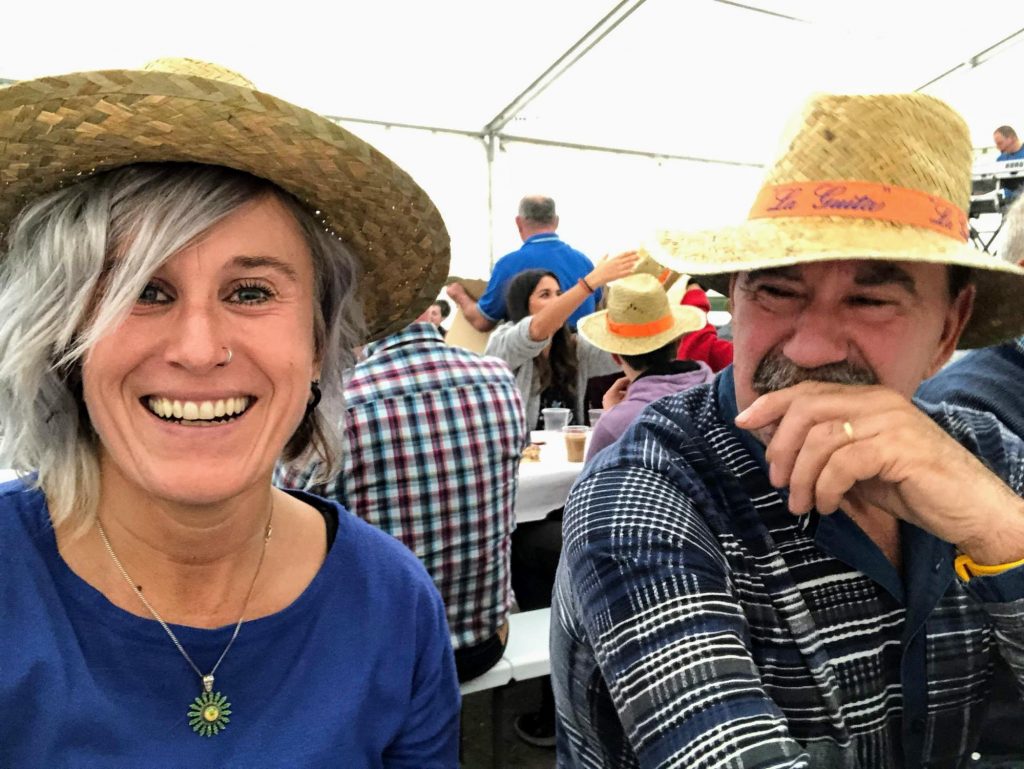
Esther Ciganda: Agree with what you said here. As a kid, I remember asking my dad several times to teach me Basque and his answer would be, “In this country (the US) you only need to know 2 languages, English and Spanish. With those two languages, you can go anywhere. With Basque, you can go to the Basque region and even there it was limited” (especially during the late 70s and early 80s).
Also, how many Basques around the world? Thousands, think in all of the Americas. What must have all these people been thinking? What was their WHY?
BBP: Clearly, you have a passion for the Basque language, and that has taken real form with the online Basque course you are developing. You also have an obvious passion for teaching. How did they converge into creating this course?
Esther Ciganda: Yeah…teaching! I remember as a little kid grabbing my parents English grammar books that they had to learn English. I used those on my brother and I would play teacher with him a lot. I had been teaching in one form or another through HS and at WSU, I was even asked to be a Chemistry Lab TA to teach at WSU (a position usually reserved for grad students). What an honor and recognition from my professors, but I didn’t realize I wanted to teach. I wanted to be a doctor ’til literally a month before graduating from WSU in Biology that I decided that I wanted to teach.
Fast forward through this next part… became a multi-disciplinary teacher: a science teacher, a Spanish teacher and leadership. Then only a Spanish teacher, which reinforced more my love for languages, but still using what I knew by relating language learning to a formula for those science-minded students like me.
When I started learning Basque, I never thought I’d be able to teach it. So in 2015, when the NABO Basque coordinator asked if I’d be interested I was shocked and honored.
Then, while living in the Basque region and teaching English I’ve had time to explore the online world while talking to many of my English teacher colleagues. They want to learn Basque and they talk about not having the time or also it being difficult since they don’t have the best understanding of Spanish either. They’ve asked me about resources with English explanations, etc. That got me thinking about a new opportunity for me… continuing to teach, helping bring Basque to immigrants/Expats in the Basque region and to all the English-speaking Basques or language lovers in the World.
But what a mind-shift for me, the teaching part is not difficult but how to create digital courses that will benefit people, that they will want to finish them, continue to learn and eventually travel there to use the language. I’ve had to learn about the business aspect of what I’m trying to do. Yes, I build relationships with students and people daily, but how to find people like me that have wanted to learn Basque their whole life, but not just with a book.
That’s what I’m trying to create… self-study, with a group component for people to talk to each other and provide office hours weekly where we can connect and I can help to answer their questions or practice with them.
BBP: Where do you hope your course will go? Where do you see it in five or ten years?
Esther Ciganda: I hope it will be something that grows with time and continues to help out people stay connected to their roots or people who love learning languages come to learn this isolate language. I also see possibly a membership program where people can enroll monthly and be part of the ongoing course and all the resources can be found in one spot.
BBP: Starting a digital course to teach English speakers Basques seems like a daunting undertaking that, as you mention, involves not only the language, but more mundane aspects like developing websites and business aspects of creating something new like this. What has been the most surprising aspect of this endeavor? Where do you hope it will all lead?
Esther Ciganda: Great questions Blas! The most surprising aspect is enjoying all the things not related to teaching. Teaching is my love and I love helping others. However, the business aspect was where I was clueless. I enjoyed making my website; no actually I loved it! I feel the sense that I may create something in the future to help teachers to create their own website. I still have to learn a lot, but to get something simple and classy ready I can now do.
My brain is also spinning because I love teaching languages. I want to teach Basque and make it accessible to as many people as possible in the world. I also want to help teachers learn Spanish, I did that before as an after school gig while teaching in Moses Lake. Then I enjoy teaching English to non-English speakers as well. So, down the road I hope to create courses in these areas.
But what I’m also thinking about is the lack of resources for eduprenuers/teacherpreneurs in Spanish or Basque. In English, ohhh many different courses and summits, but not as many in other languages. That is an area that is silently tugging at me as well. How can I help other educators in other countries to create side hustles?
I’m a dreamer and a go-getter with a lot of patience. I will continue to see where all this new learning will take me. For the moment though, my focus is on building courses to learn Basque.
BBP: How do you think a science background changes how you think about learning and teaching language?
Esther Ciganda: In the classroom, we were taught to focus on the different learning styles. I’m scientific and logical in my thinking with a creative brain that’s usually buried and hidden. I have to branch out of my comfort zone at times to relate to the students who think differently than me. I get to know my students so I know which ones like certain styles and which prefer something different.
So when I teach languages I use the approaches that will help my students. For some, I explain things in very simple terms and possibly use pictures or diagrams. With those who like math and science, I tend to relate grammar topics that pop up as formulas. Many times it’s these students who like to do grammar and hate to do writings. (Yup, just like me.) Yet, I know the importance of being able to use the language and not fill in grammar worksheets.
I’ll emphasize how listening to music and or watching shows will help develop their listening skills and build vocabulary. I see my young students in Donostia/San Sebastian and they usually “know” and “can” sing the songs to what’s popular in the US. How do they do that without studying? Repetition! Experimentation… do, say, listen, repeat, etc.
BBP: As a chemistry major, I guess you know that the element tungsten was discovered by a pair of Basque brothers, the Elhuyars. I always wonder what they might have named the element if elements had been named by the discoverers, as they are now.
Esther Ciganda: Yes, I remember and when I use the Elhuyar dictionary I’ve wondered if it’s connected to them. I wonder what they would have named it and what would have been its chemical symbol. Basques and their connection to earth and some lifting heavy stones; quite appropriate that Tungsten means heavy stone or something like that, but the symbol W always confused me and then my students. I wondered why they called it Wolfram instead of a Basque name.
BBP: Do you have a favorite Basque word? What is something that you find particularly interesting about the language?
Esther Ciganda: Not one specifically that I can think of, but I have a phrase that I love. I heard it from my friend in Iparralde. When someone sneezes you say, “Ehun urtez!” and they should respond, “eta zu kontalari.”
I find it interesting how in such a small geographical area that you can find such variation in the way you pronounce words. For example, how is it that ukan, its conjugations, can vary so much? In Gipuzkoa you’ll hear dut pronounced as det. In Bizkaia, they’ll say dot. For izan, the form for “I am” is naiz but in Zuberoa they’ll say niz and in Bizkaia naz. Even the days of the week: Saturday in Bizkaia is Zapatua and in Zuberoa it’s Neskenegüna.
BBP: You mentioned pelota and I’ve seen you’ve had a successful career as a pilotari. How did you get into pelota? Was there something about the sport that was particularly interesting to you?

Esther Ciganda: As a little girl, I fell in love with all sports and can go on and on. My dad would talk about how they played handball in the old country and then we’d hear about a match in the Basque Country and a family friend of ours living near us, also Basque, would catch games via his satellite or something. I don’t quite remember. So, I always had it set in my mind that if I had a chance I wanted to play.
When I moved to Boise, what was one of my first questions? How can I get started playing? I started playing on the B-league with guys using the bigger/heavier pala which many girls also use to play in the Basque Country. We also had a meeting to use scholarship money from the Cenarrusa Foundation to buy equipment either for kids or for women.
We had so many women interested that it was an easy vote. The women’s program was re-started in 2007, and we ended up one year with over 40 ladies playing. I still played with the guys and a few other ladies also started playing in the B-league and I played in the women’s league, where we used paddles from Argentina and the variation of this sport is known as Paleta Argentina or Baleen. I would train during the week in the evenings and then play games twice a week. Like I said, I love sports, but what appealed to me was that it was a sport directly tied to my culture.
I’m fortunate to have moved to Boise because that one decision allowed me to play the sport locally, then in national N.A.B.O. tournaments and World Tournaments. I’ve had amazing experiences due to the sport including being the Team Leader for Team USA Basque Pelota at the PanAm Games in Guadalajara, Mexico and Lima, Peru. I will continue to help out with the US Federation of Pelota to grow our numbers and especially focus on getting our women competitive enough to qualify for the World Championships and the PanAmerican Games.
BBP: Last question! What would you say to all of those who dream of learning Basque someday?
Esther Ciganda: I’d ask, what are you waiting for? Don’t listen to those who say “it’s too hard.” I always had heard it was so hard, but when I started learning the language I realized you just needed to have a different mindset for Euskara than for English or Spanish. Grammatically yes, it’s different, but not impossible. If you are passionate about learning Basque, go for it. If you’ve been wanting to learn it, don’t let anything stop you from doing it.
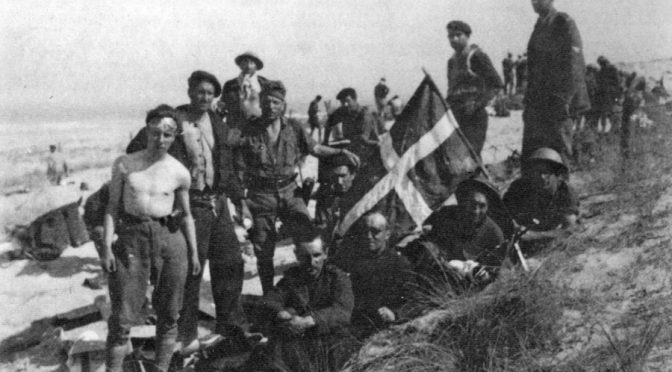
In collaboration with Pedro Oiarzabal and the Sancho de Beurko Association, I’ve been translating some of their articles in the Fighting Basques series. These articles summarize their research into the contributions of Basques during World War II, often focusing on the role of Basque-Americans. One of the most distinguished contributions came from the Gernika Battalion, a collection of Basque veterans and new comers that fought near the end of the war on the front lines who played a key role in the Battle of Pointe de Grave.
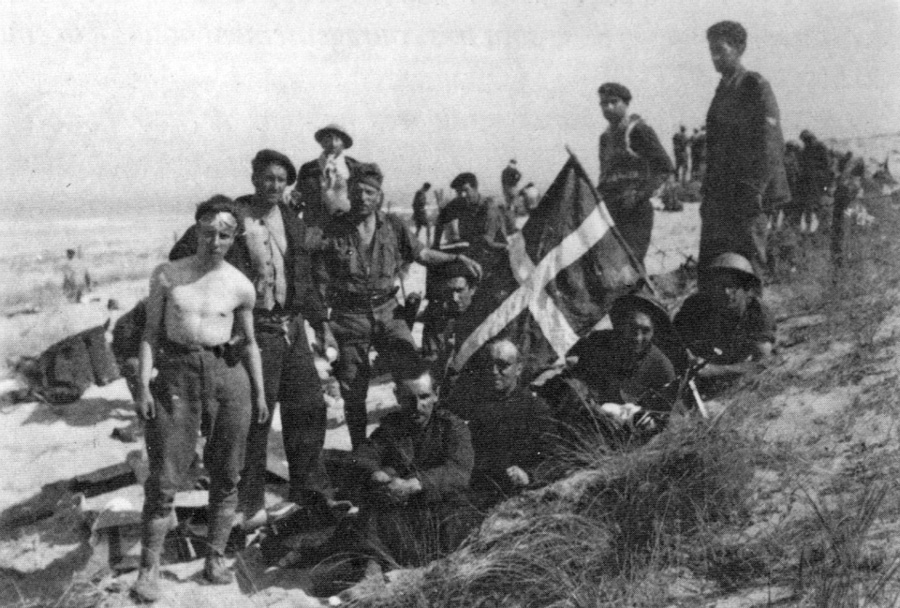
Primary source: Fighting Basques: Batallon Gernika.